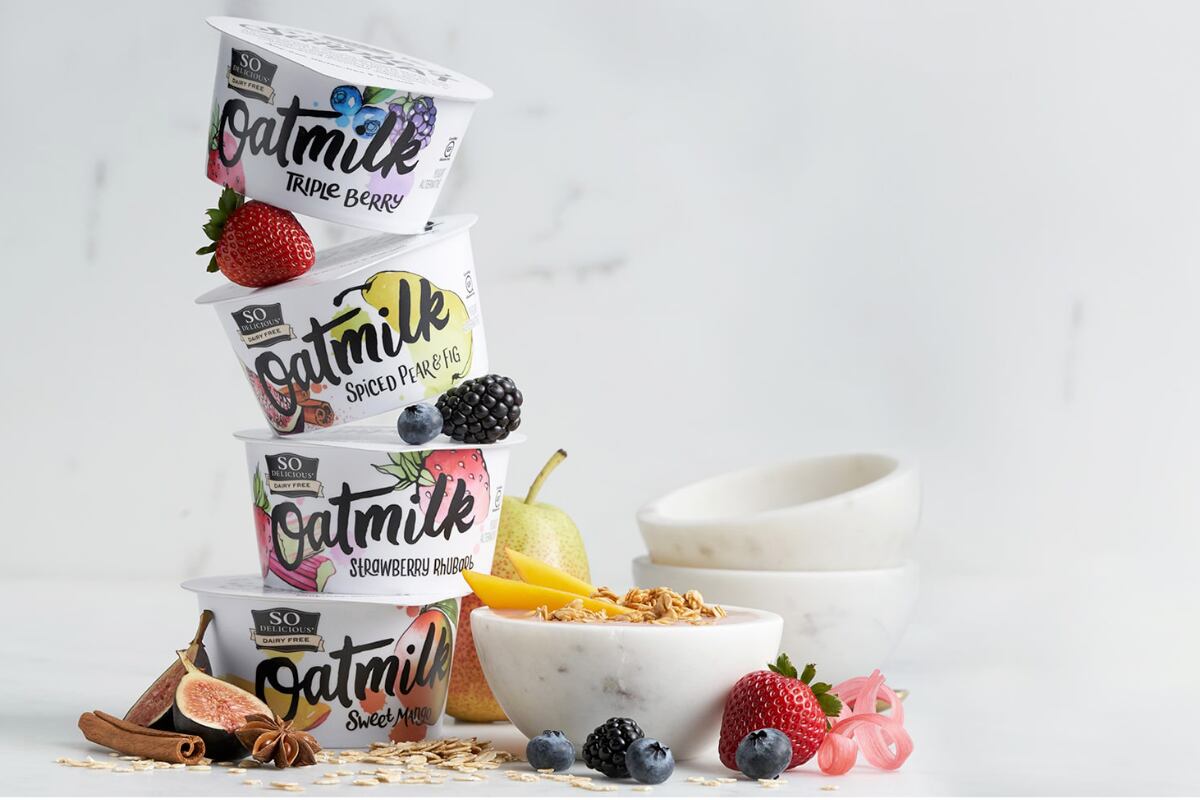Sales of Danone's EDP (essential dairy and plant-based) portfolio grew +3.1% for the first half of 2020, with much of its key growth occurring in Q1 2020 at the height of pandemic panic shopping, according to the company's H1 2020 financials report.
“Today, when you look at it, almost one out of two American families consume a plant-based beverage, when it was 30% at the time we acquired WhiteWave. This broadly benefited our portfolio of brands and especially So Delicious and Horizon Organic that gained market share over the period,” said Danone chairman and CEO, Emmanuel Faber during the company’s H1 2020 financial earnings call.
In North America, Danone’s organic milk brand segment which includes Horizon Organic, saw household penetration increase 6% in Q1 2020 compared to last year.
Also in the US, household penetration of Danone plant-based beverage brands (i.e. Silk – acquired from WhiteWave Foods in 2017) increased 3% for Q1 2020 compared to the same period last year. Household penetration of the company’s plant-based yogurt brands – Silk and So Delicious – saw significant growth, climbing 43% vs. the same period last year.
The growth in the company’s plant-based yogurt offerings matches up with similar positive growth trends seen in the category. According to recent Nielsen sales data, plant-based yogurt sales grew 30.8% in the 52 weeks ending April 18, 2020.
“There is no category in which we are not growing at 10% in WhiteWave on the H1. So we believe that this strategic move is fueling our ability and structuring our ability to answer the next trends and the emerging trends that we see all over the place with the COVID now,” said Faber.
Water brands weigh heavily on H1 2020 sales
Danone’s bottled water segment which includes evian and Volvic brands in North America saw significant declines on a global basis as the stay-at-home orders took full effect across the company’s key markets.
Small-single serve bottled water formats saw a 32% decline in sales in the first half of 2020. However, large format and jug water made up some of lost sales growing 12% compared to the same time last year.
“You see that evian and Volvic posted 4% volume growth for large formats in H1 versus last year, thanks to a portfolio also made of several new options ranging from 1 to 8 liters. So it means that people at home having the ability to consume tap water continue to buy water and this is confirming the strength of the category around healthy hydration,” noted Faber.
Entering stop-and-go reopening phase
To bolster its supply chain resilience throughout the global pandemic, Danone spent roughly US$135m in extra costs including approximately US$41m in donations and bonuses to its 60,000 frontline employees, roughly US$47m in sanitary measures, and another US$41m in extra logistic costs (i.e. social distancing, warehousing adaptation, truck rate increase, and temporary workers).
Anticipating a second-wave of the coronavirus which will continue to impact consumer confidence and shopping behaviors, Danone is entering the second half of 2020 cautiously, said Faber.
“We call it stop-and-go reopening, which, from a macro standpoint, we would describe as this gradual reopening with resurgence of at least local lockdowns,” he said.
“We really want to learn about what is going to be sticking in the patterns of consumption that we see by channels, countries, categories across the globe right now, and what is conjunctural versus structural shifts. So these learnings are going to be essential for us to prepare for Phase III, which is going to be 2021 and onwards in terms of adaptation.”

